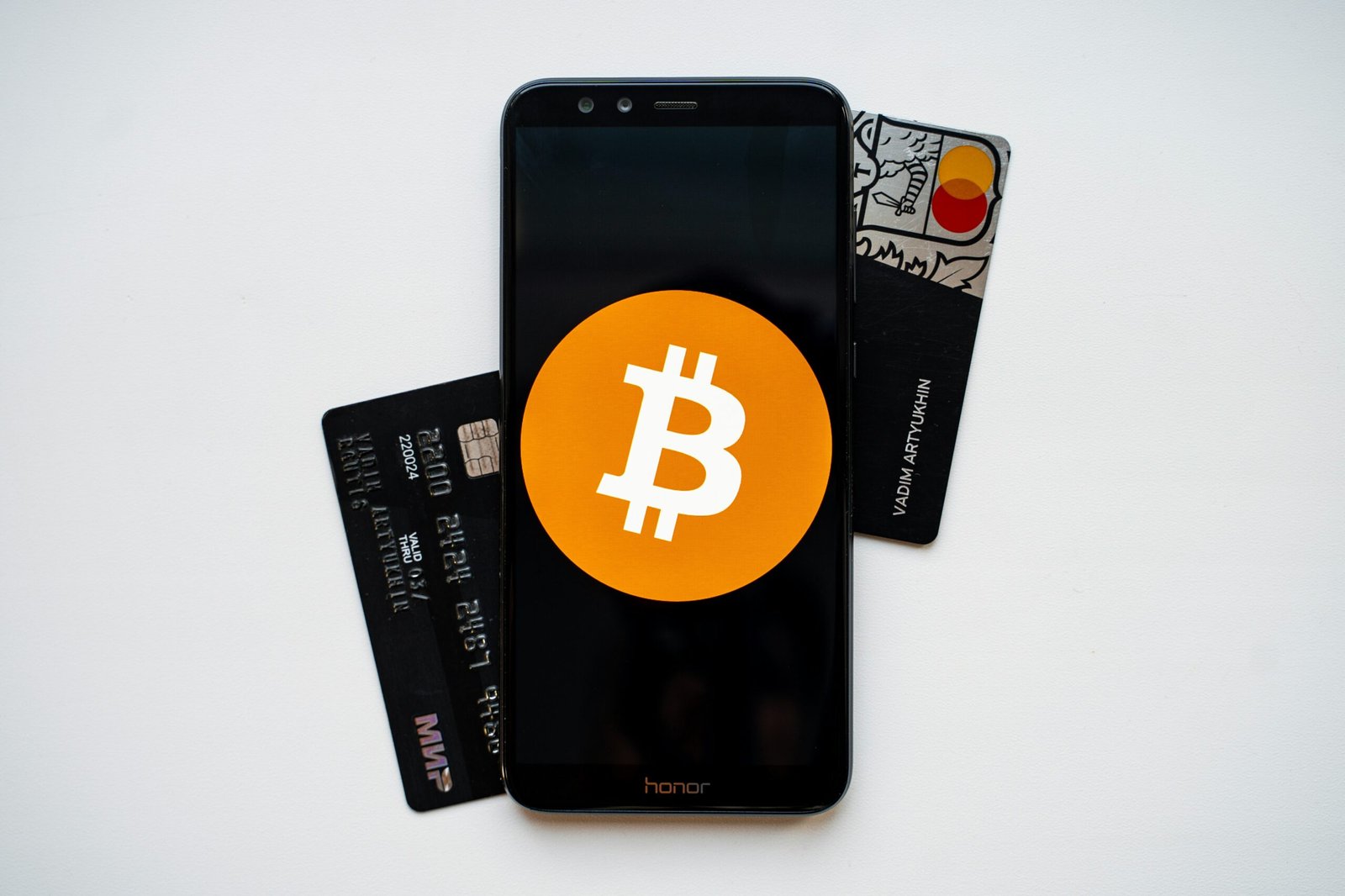Creating Your Own Simple DIY Crypto Wallet: A Step-by-Step Guide
“`html
Introduction to Cryptocurrency Wallets
Cryptocurrency wallets are essential tools in the digital asset ecosystem, serving as secure repositories for holding and managing digital currencies. These wallets are pivotal in enabling users to store, send, and receive cryptocurrencies such as Bitcoin, Ethereum, and others. At their core, cryptocurrency wallets utilize a pair of cryptographic keys: a public key and a private key. The public key functions as an address that can be shared with others to receive funds, while the private key is a confidential code that grants access to the wallet’s contents. The safety and security of a wallet hinge on the careful management of these keys, particularly the private key.
There are two primary types of cryptocurrency wallets: hot wallets and cold wallets. Hot wallets are connected to the internet and facilitate easier, more immediate transactions. Examples include mobile apps, desktop software, and web-based wallets. Although convenient, hot wallets are more vulnerable to cyber threats such as hacking or phishing attacks. In contrast, cold wallets are offline storage solutions, such as hardware wallets and paper wallets. These provide enhanced security by isolating the keys from online exposure, making them an ideal choice for long-term storage and safeguarding significant amounts of cryptocurrency.
Understanding the distinction between hot and cold wallets, along with the fundamental concepts of public and private keys, is crucial for anyone looking to delve into the world of cryptocurrencies. Whether for everyday transactions or long-term investments, a crypto wallet is indispensable for ensuring the safety and accessibility of your digital assets. By grasping these basics, readers will be better prepared to follow the subsequent steps in creating their own DIY crypto wallet, fostering a more secure and personalized approach to managing their cryptocurrency holdings.
When embarking on the creation of your own DIY crypto wallet, understanding the various types available is crucial. Crypto wallets come in several forms, each offering unique advantages and disadvantages in terms of security, convenience, and usability. Here, we explore the four primary categories: hardware wallets, software wallets, paper wallets, and mobile wallets.
Hardware Wallets
Hardware wallets are physical devices designed to securely store cryptocurrencies. They are considered highly secure because they keep your private keys offline, thus minimizing exposure to online threats. These wallets often come with robust security features such as PIN protection and recovery seed phrases. However, the initial cost of purchasing a hardware wallet can be high, and they may require technical know-how to set up and use effectively.
Software Wallets
Software wallets, also known as desktop wallets, are applications installed on your computer. They provide a balance between security and convenience, offering features like multi-signature support and encrypted storage. While they are more vulnerable to malware and hacking compared to hardware wallets, they are generally easier to use and often free. Regular backups and security measures are essential to protect your assets when using software wallets.
Paper Wallets
Paper wallets are a form of cold storage where your private and public keys are printed on a piece of paper. They are immune to online hacking attempts, making them one of the most secure options available. However, they are also the most vulnerable to physical damage or loss. Generating a paper wallet requires careful handling to ensure the keys are not exposed during the process. For long-term storage, paper wallets are highly effective but lack the convenience of more accessible wallet types.
Mobile Wallets
Mobile wallets are applications designed for smartphones, providing a convenient way to manage and spend your cryptocurrencies on the go. They often include features like QR code scanning and integration with various services. While they offer high usability, the security of mobile wallets can be a concern, especially if your phone is lost or compromised. It’s crucial to use strong passwords and enable additional security features like two-factor authentication to safeguard your funds.
In deciding which type of crypto wallet best suits your needs for a DIY project, consider your priorities in terms of security, convenience, and technical expertise. Each wallet type offers distinct features that cater to different user preferences and requirements.
Gathering the Necessary Materials and Tools
Creating a DIY crypto wallet requires careful planning and the right set of tools and materials to ensure security and functionality. The materials and tools needed to create a simple DIY crypto wallet can be divided into software tools, hardware components, and other essentials. Below is a detailed list and description of the necessary items, along with tips on where to obtain them and any cost considerations.
First and foremost, a reliable computer is essential. The computer should have up-to-date antivirus software to protect against malware and other security threats. It’s advisable to use a dedicated computer for your crypto wallet activities to minimize risk. If you’re considering a hardware wallet, additional hardware components will be needed, such as a microcontroller or a Raspberry Pi, depending on the complexity of your wallet.
For software tools, you’ll need wallet generators. These can be found online, with options like MyEtherWallet or WalletGenerator.net being popular choices. Ensure you download these tools from their official websites to avoid phishing scams. Additionally, you may need software for generating and managing private keys and public addresses. Open-source software like Electrum or Armory can be helpful in this regard.
A USB drive is another critical component. It will be used to store backups of your wallet and other important data. Opt for a high-quality, encrypted USB drive to enhance security. Paper and a pen are also necessary for writing down your private keys, recovery phrases, and other sensitive information. This offline method of storing information is often referred to as a paper wallet. Ensure you use a permanent marker and archival-quality paper to prevent fading or damage over time.
Finally, consider where to obtain these materials. Most of the software tools are freely available online. Hardware components like microcontrollers or Raspberry Pi devices can be purchased from electronics stores or online retailers such as Amazon or Adafruit. USB drives and archival-quality paper can also be found at office supply stores or online. Depending on the quality and brand, costs can vary, but a modest budget of $50 to $100 should suffice for most basic setups.
By carefully gathering these materials and tools, you set a solid foundation for creating a secure and functional DIY crypto wallet.
Setting Up a Software-Based DIY Crypto Wallet
Setting up a software-based DIY crypto wallet is a fundamental step for anyone looking to enter the world of cryptocurrencies. Below is a detailed guide to help you navigate through the process efficiently and securely.
Download and Install Wallet Software
Begin by selecting a reputable wallet software. Popular options include Electrum, Exodus, and Mycelium. Visit the official website of the chosen wallet to download the software. It is crucial to download from official sources to avoid malicious versions. Once downloaded, follow the installation instructions specific to your operating system.
Create a New Wallet
After installing the wallet software, launch the application. You will be prompted to create a new wallet. This process typically involves selecting a wallet type and defining a strong password. Ensure your password is unique and complex to enhance security. The wallet software will then generate a seed phrase—a list of words used to recover your wallet. Write this seed phrase on paper and store it securely offline.
Generate and Securely Store Private Keys
Upon creating your wallet, private keys will be automatically generated. These keys are essential for accessing and managing your cryptocurrency. Do not share your private keys with anyone. It is recommended to store them in a secure location, such as a hardware wallet or an encrypted external drive, to prevent unauthorized access.
Understanding Wallet Addresses
Each crypto wallet comes with a unique wallet address, a string of alphanumeric characters used to send and receive cryptocurrencies. This address is public and can be shared with others to facilitate transactions. However, always double-check the address when sending or receiving funds to avoid errors. Familiarizing yourself with these components will enable you to manage your crypto assets effectively.
By following these steps, you can set up a software-based DIY crypto wallet that balances ease of use with robust security measures.
Creating a paper wallet is a popular method for securely storing cryptocurrency offline. A paper wallet is essentially a physical document containing your public and private keys, which are generated and printed using a paper wallet generator. This method provides an added layer of security by being completely offline, thus impervious to hacking attempts and malware that might afflict online wallets.
Steps to Create a Paper Wallet
To create a paper wallet, follow these steps:
1. **Choose a Paper Wallet Generator:** The first step is to select a reputable paper wallet generator. Some popular options include BitAddress.org and WalletGenerator.net. Ensure that you download the generator from a trusted source and verify its authenticity.
2. **Generate the Wallet:** Once you have the generator, disconnect from the internet to enhance security. Open the downloaded generator on your offline device and follow the instructions to generate a new wallet. This typically involves moving your mouse around to create random entropy, which helps in generating a unique key pair.
3. **Print the Wallet:** After generating the wallet, print the document that contains your public and private keys. Use a printer that is not connected to the internet to avoid the risk of your keys being intercepted during printing. Additionally, consider using high-quality paper and ink to ensure the longevity of the document.
4. **Store the Wallet Safely:** Once printed, store the paper wallet in a secure location. Ideal storage options include a safe, a lockbox, or any other place that is both physically secure and protected from environmental damage such as water and fire. It is also advisable to create multiple copies and store them in different, secure locations.
Security Advantages and Risks
Paper wallets offer significant security advantages. Being offline, they are immune to online threats such as hacking, phishing, and malware attacks. However, they do come with their own set of risks. Physical theft, loss, and damage are primary concerns. If someone gains access to your paper wallet, they can potentially steal your cryptocurrency. Additionally, if the document is damaged or lost, you might lose access to your funds permanently.
To mitigate these risks, consider employing additional security measures. Use tamper-evident packaging for your paper wallets and store them in multiple, secure locations. Avoid sharing your private key with anyone and consider encrypting the paper wallet for an added layer of security. By following these guidelines, you can create and maintain a secure offline storage solution for your cryptocurrency assets.
Advanced DIY: Building a Hardware Wallet
For those interested in taking their DIY crypto wallet to the next level, constructing a hardware wallet can be a rewarding and educational project. Hardware wallets offer enhanced security by storing private keys in a secure offline environment, making them an ideal choice for safeguarding your cryptocurrency holdings.
To begin, you will need several basic components, including a microcontroller, such as an Arduino or Raspberry Pi, and a USB device for interfacing with your computer. Additionally, you will require a secure element or a hardware security module (HSM) to store your private keys securely. Other components include a display module, typically an OLED screen, and buttons for user input.
Once you have gathered all the necessary hardware, the next step is assembling the device. Start by connecting the microcontroller to the secure element. Ensure that the secure element is properly interfaced with the microcontroller to enable secure storage and retrieval of private keys. Connect the display module and buttons to the microcontroller, which will allow you to interact with the wallet.
With the hardware assembled, the next step is programming the device. Write firmware for the microcontroller that handles key generation, signing transactions, and displaying information on the screen. Libraries and frameworks are available for different microcontrollers to facilitate this process. For instance, you can use the Arduino IDE for programming an Arduino-based wallet or Python for a Raspberry Pi-based wallet.
Security is paramount when building a hardware wallet. Ensure that the firmware includes robust cryptographic algorithms and secure coding practices to mitigate vulnerabilities. Implement measures such as PIN protection and confirm transaction details on the device to safeguard against unauthorized access.
Finally, rigorously test the hardware wallet to confirm its functionality and security. Conduct thorough testing by performing key generation, signing dummy transactions, and verifying the output. Regularly update the firmware to patch any security vulnerabilities and keep the wallet secure.
By following these steps, you can create a functional and secure hardware wallet, enhancing your understanding of cryptocurrency security while protecting your digital assets.
Securing Your DIY Crypto Wallet
Securing your DIY crypto wallet is paramount to ensuring the safety of your digital assets. A critical first step is creating strong, unique passwords. A robust password should be a mix of upper and lower case letters, numbers, and special characters. Avoid easily guessable information such as birthdays or common words. Utilizing a password manager can also help generate and store complex passwords securely.
Enabling two-factor authentication (2FA) adds an extra layer of security to your crypto wallet. This method requires a secondary form of identification in addition to your password, typically through a mobile app like Google Authenticator or via SMS. By requiring two distinct forms of verification, 2FA significantly reduces the risk of unauthorized access.
Regularly updating the software associated with your crypto wallet is another essential security measure. Developers frequently release updates that patch vulnerabilities and enhance security features. Ensuring your wallet software is up-to-date minimizes the risk of exploitation by malicious actors.
Backing up your private keys is crucial for recovering your wallet in the event of loss or hardware failure. Store these backups in multiple secure locations, such as encrypted external drives or hardware wallets. Avoid storing private keys online or in cloud services, as these can be more susceptible to hacks.
Maintaining the confidentiality of your private keys is non-negotiable. Whoever has access to your private keys has control over your crypto assets. Never share your private keys with anyone, and be cautious of phishing scams designed to trick you into revealing sensitive information. Always verify the authenticity of websites and emails before entering any personal details.
By adhering to these best practices—creating strong passwords, enabling 2FA, updating software regularly, backing up keys, and keeping private keys confidential—you can significantly bolster the security of your DIY crypto wallet, safeguarding your investments against potential threats.
Maintenance and Troubleshooting
Ensuring the longevity and security of your DIY crypto wallet necessitates regular maintenance and effective troubleshooting. One of the primary tasks is keeping your wallet software up to date. Software updates often include critical security patches and feature enhancements that protect your assets from potential vulnerabilities. Therefore, routinely check for updates and install them promptly.
Backing up your wallet is another essential maintenance task. Regularly create backups of your wallet’s private keys and store them in multiple secure locations, such as encrypted USB drives or offline hardware wallets. This practice safeguards your funds against hardware failures, loss, or theft. Remember, the loss of a private key means the irreversible loss of access to your cryptocurrency.
Despite taking precautions, issues can still arise. One common problem is wallet recovery. If your wallet becomes inaccessible due to software corruption or device failure, having a backup can be a lifesaver. Most wallets provide a recovery phrase during setup – a sequence of words that can restore your wallet. Ensure this phrase is stored securely and never shared with anyone.
Dealing with lost keys is another critical issue. If a private key is lost and no backup exists, accessing the associated funds is impossible. To mitigate this risk, always ensure that backups are up to date and stored securely. If you’re using a hardware wallet, follow the manufacturer’s instructions for key recovery.
Lastly, ensuring continued access to your funds involves regular checks to confirm that your wallet is functioning correctly. Test small transactions periodically to verify that sending and receiving funds works as expected. If any issues are detected, refer to the wallet’s user manual or seek assistance from the wallet’s support community.
For further assistance, numerous online resources and communities are available. Websites like BitcoinTalk, Reddit’s r/CryptoCurrency, and the support forums of specific wallet providers can offer valuable advice and troubleshooting tips.






